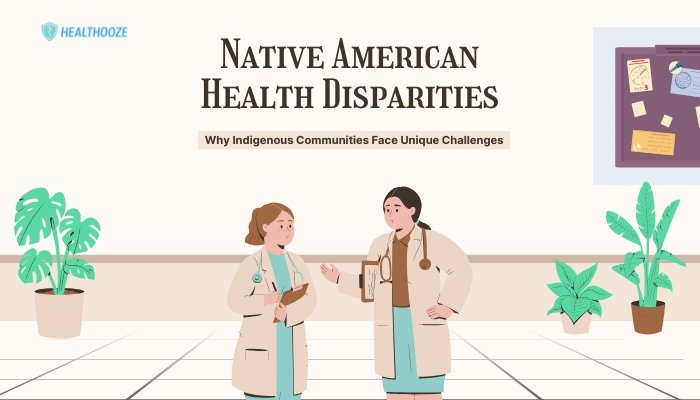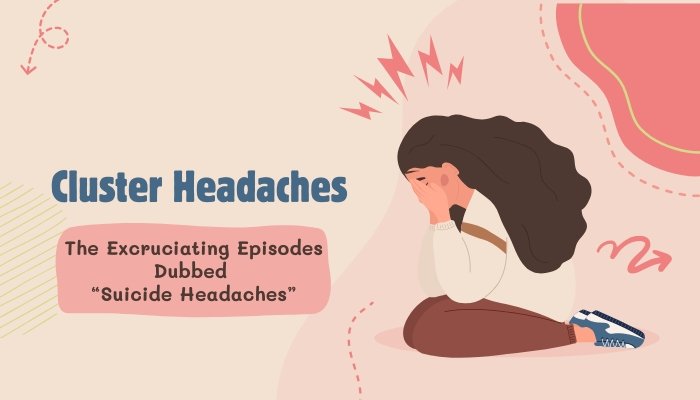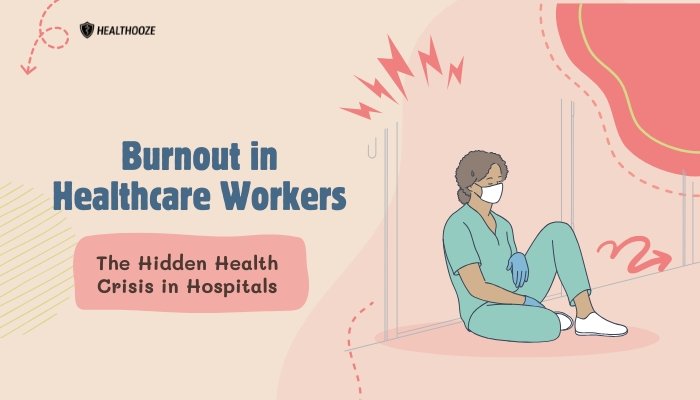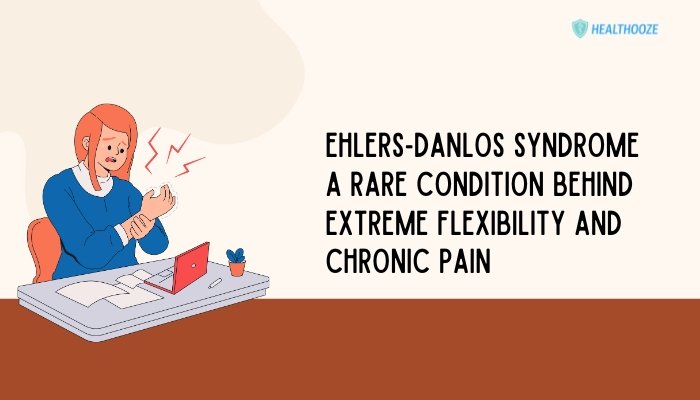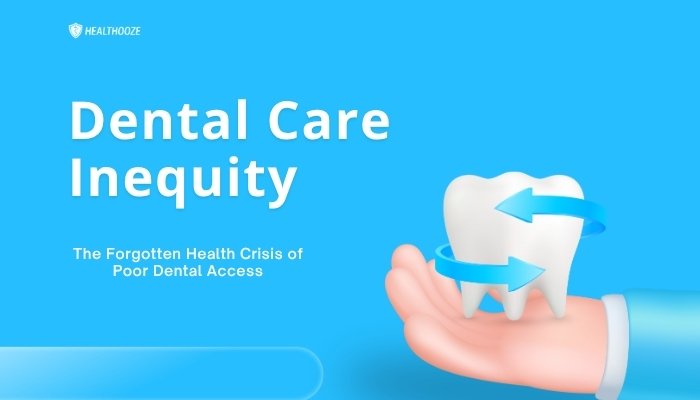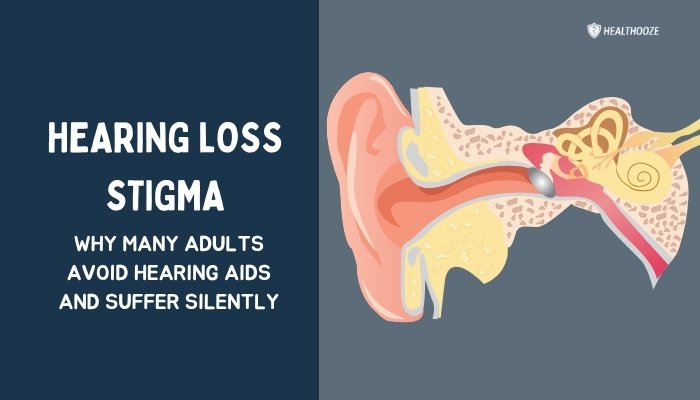Introduction
Native Americans, also referred to as Indigenous peoples, embody a wide range of tribal groups with diverse languages, customs, and histories. Although they represent many different cultures, they share a common experience of social, economic, and political barriers. These barriers have led to significant health disparities in the present day.
Indigenous communities often experience high rates of chronic diseases, mental health issues, and obstacles to basic health care services. In many cases, these disparities are linked to historical trauma, persistent poverty, cultural dislocation, and limited access to quality care.
This article examines how Indigenous peoples in the United States experience distinctive health challenges. It covers historical context, socioeconomic conditions, cultural considerations, and potential interventions.
The aim is to highlight the root causes of health disparities and explore community-based strategies that can lead to better outcomes. By understanding these factors, health providers, policy experts, and community members can work together to address and reduce disparities in a sustainable way.
Historical Overview
The story of health disparities among Native Americans cannot be separated from a long history of colonization, forced relocation, and broken treaties. These events damaged social structures, disrupted traditional ways of life, and introduced widespread illness. Many Indigenous communities lost their homelands, language, and cultural practices. This historical trauma continues to influence health outcomes.
Displacement and Its Effects
- Loss of traditional lands: Forced relocations pushed communities away from their traditional food sources and spiritual sites.
- Cultural disruption: Government-led boarding schools aimed to erase Indigenous languages and cultural identities, causing a deep generational impact.
- Introduction of new diseases: Exposure to smallpox, measles, and influenza had devastating effects due to the lack of immunity.
Over time, these traumas shaped population health. Generations of Indigenous peoples grew up in environments that lacked consistent resources for nutrition, education, and medical care. This history has contributed to socioeconomic and cultural conditions that heighten health risks.
Socioeconomic Influences on Health
Socioeconomic factors have an influential role in health outcomes. Income, employment, and education levels affect an individual’s ability to secure nutritious food, stable housing, and medical services. Many Native American communities face higher unemployment rates and lower high school completion rates than the national average. These conditions exacerbate health problems by limiting access to preventive care and reliable insurance coverage.
Income and Poverty
Poverty rates in some Indigenous regions exceed those in many urban areas. Limited job opportunities, underfunded schools, and the remote nature of some reservations hinder financial growth. This persistent poverty has a direct connection to poor nutrition, chronic stress, and inadequate housing—all of which influence physical and mental well-being.
Education Barriers
Quality education remains vital for improving job prospects, health literacy, and overall empowerment. Some Native American students attend schools with fewer resources and less exposure to health science programs. This educational gap can reduce awareness of preventive measures and limit the pool of qualified Indigenous health professionals who can serve their communities.
Employment and Insurance Coverage
Fewer local industries and geographic isolation can lead to scarce employment opportunities. Many individuals work in low-wage jobs that may not offer health insurance. Even when insurance is available, coverage may be limited, leading to higher out-of-pocket costs. Such factors discourage many from seeking early medical care, causing delayed treatment of chronic conditions.
Geographic Isolation and Limited Access
Many Indigenous communities reside in remote areas, far from major urban centers. This physical distance creates challenges for health care delivery.
- Transportation Barriers
- Lack of reliable public transit options.
- Long travel times on remote roads that may be poorly maintained.
- Sparse Health Care Facilities
- Very few hospitals or clinics within a reasonable driving distance.
- Limited availability of specialty care, requiring lengthy trips for specialized services like oncology or cardiology.
- Communication Gaps
- Weak or nonexistent broadband services restrict telehealth options.
- Cellular coverage may be unreliable, hampering emergency calls or follow-up care.
Such geographic constraints make it challenging for individuals to maintain consistent care, manage chronic illnesses, or respond to medical emergencies.
Cultural and Linguistic Considerations
Native American communities have a wide range of cultural practices and languages. These factors can affect how medical information is received and how treatments are followed.
Language Barriers
Some older Indigenous adults speak primarily a Native language. When medical providers do not understand the language or cultural context, misunderstandings can arise. This gap may lead to confusion about treatment instructions or the importance of medication adherence.
Cultural Views on Health and Illness
Traditional beliefs about illness often incorporate spiritual and communal dimensions. Some community members may rely on traditional healers or herbal remedies. When Western-style medicine is presented without respect for these traditions, trust issues can emerge. Cultural sensitivity in health care settings can improve patient-provider relationships and adherence to treatment plans.
Historical Distrust of Medical Systems
Forced assimilation policies and unethical medical research in the past damaged trust in mainstream medicine. Many Native Americans remain wary of medical authorities. This skepticism can lead to reluctance to pursue preventive care, screenings, or participation in medical research. Building trust requires transparent communication, community-led outreach, and respect for traditional healing methods.
Common Health Conditions and Risks
Various health conditions disproportionately affect Indigenous communities. These include chronic diseases, mental health issues, substance use disorders, and maternal health concerns. Understanding these trends can guide targeted interventions and resource allocation.
Chronic Diseases
- Diabetes
- Type 2 diabetes rates in some Indigenous communities are two to three times higher than the national average.
- Contributing factors include genetic predispositions, limited access to healthy foods, and lower rates of physical activity.
- Heart Disease
- Diet transitions from traditional foods to processed options increase the prevalence of cardiovascular risks.
- High blood pressure and obesity rates are more frequent, raising the likelihood of heart disease.
- Cancer
- Some tribal groups have higher rates of liver and stomach cancers.
- Delayed screenings and poor access to specialized care can lead to later-stage diagnoses.
Mental Health and Substance Use
Mental health challenges can stem from historical trauma, economic stress, and cultural disconnection. Depression, anxiety, and post-traumatic stress disorder occur at elevated rates in certain Indigenous populations. Substance use disorders, including alcohol use and opioid misuse, are also more common due to limited mental health services, historical dislocation, and socioeconomic strain.
Maternal and Child Health
Expectant mothers may face inadequate prenatal care, often because the nearest clinic offering obstetrics services is far away. This barrier elevates risks of complications such as gestational diabetes, preeclampsia, and low birth weight. Additional factors, including lower educational attainment and stress from economic hardship, can contribute to adverse outcomes for both mothers and infants.
The Role of Federal Policy
The federal government recognizes the sovereign status of Tribal Nations, which should allow them a degree of self-governance over health and social services. The Indian Health Service (IHS), overseen by the Department of Health and Human Services, is tasked with providing health care for many Native Americans. However, chronic underfunding, staff shortages, and complex bureaucratic structures often limit the effectiveness of these programs.
Indian Health Service (IHS)
- Funding Gaps: The IHS frequently operates with less funding per capita than other federal health programs, constraining service offerings.
- Shortage of Skilled Professionals: Remote locations struggle to attract and retain doctors, nurses, and specialists.
- Infrastructure Challenges: Aging facilities and outdated equipment reduce the level of care available to patients.
Policy Initiatives
Various legislative measures aim to improve health care access for Indigenous communities, including the Indian Health Care Improvement Act. Yet, implementation is uneven, and many local clinics still lack consistent resources. Greater collaboration between tribal governments and federal agencies is necessary to strengthen the health care infrastructure in remote areas.
Community-Driven Health Solutions
Many Indigenous communities are stepping forward with programs that blend conventional medicine with traditional knowledge. These efforts strive to develop culturally appropriate care models that tackle the root causes of health disparities.
Tribal Health Programs
Some tribal governments operate their own health clinics, independent of the IHS, to ensure services align with cultural values and local preferences. These clinics often provide:
- Routine checkups and screenings
- Dental care
- Behavioral health services
- Public health education
Community Outreach and Education
Indigenous leaders have formed grassroots campaigns to address health issues at the local level. Examples include:
- Nutrition programs: Encouraging the use of traditional foods, such as wild plants and lean meats, to reduce processed sugar and saturated fat intake.
- Physical activity clubs: Cultural dance groups or walking clubs that incorporate traditional practices.
- Chronic disease management classes: Education on blood sugar control, stress management, and healthy meal preparation.
Such initiatives empower community members to take control of their well-being and support one another through shared cultural values.
Integrating Traditional Healing
Traditional healing techniques hold a significant role in many Native American communities. Some rely on ceremonies, herbal medicine, and spiritual guidance in their health practices. Integrating these methods into modern care can improve patient satisfaction and adherence.
Ceremonies and Spiritual Practices
For many communities, healing ceremonies and prayer are integral parts of treating an illness. Offering spiritual and cultural accommodations in modern clinics—such as allowing time and space for prayer—can bridge the divide between Western medicine and Indigenous perspectives.
Collaborations with Traditional Healers
Some programs invite traditional healers to work alongside medical doctors. By sharing insights and knowledge, both groups can create more comprehensive care plans. These partnerships can also reduce patient mistrust by validating cultural identities and knowledge systems.
Culturally Sensitive Care
Patients often feel more comfortable discussing health concerns with providers who understand their cultural background. Training health care staff in cultural competency helps them offer more respectful and effective care. Tribal colleges and universities also train Indigenous health care professionals who later serve in their home regions.
Addressing Mental Health and Substance Use
Mental health and substance use are sensitive issues that often require culturally informed strategies. Many Indigenous groups incorporate communal and spiritual frameworks into mental health support, emphasizing unity and shared responsibility.
Holistic Approaches to Counseling
In some tribal settings, counseling may involve not only the individual but also family members and elders. This approach recognizes that mental wellness involves interpersonal relationships, spiritual beliefs, and cultural identity. Group talking circles, guided by traditional leaders, offer a supportive space where individuals can share experiences without judgment.
Community-Based Recovery Programs
Several reservations have developed substance use recovery programs with the following characteristics:
- Involvement of tribal elders in mentorship roles
- Aftercare services that include ongoing community support
- Cultural ceremonies to encourage healing from the psychological and spiritual harm caused by addiction
- Partnerships with local law enforcement and social services to address legal and social aspects of substance use
Addressing mental health in a context that respects traditions and shared experiences can be more effective than generic approaches.
Maternal and Child Health Interventions
Improving maternal and child health is critical for ending intergenerational cycles of poor health. Indigenous women and children often face additional risks linked to limited prenatal care, high stress levels, and lack of specialized services.
- Expanded Prenatal Services
- Mobile clinics that bring obstetric care closer to remote areas
- Nutritional support programs that provide vitamin supplements and healthy meals
- Childhood Immunizations
- Community-led awareness campaigns on the importance of vaccinations
- Collaboration with local schools to administer vaccines in a comfortable environment
- Breastfeeding Promotion
- Peer support groups guided by older women in the community
- Education on breastfeeding benefits to reduce infant infections and foster healthy growth
Early and consistent care for mothers and infants sets the foundation for better long-term outcomes.
Telehealth Possibilities
Telehealth can help reduce travel burdens and address provider shortages by connecting patients with specialists through video calls and online messaging. While broadband limitations exist in rural areas, targeted investments in internet infrastructure can allow more communities to benefit from remote consultations.
Advantages for Indigenous Communities
- Specialist Access: Patients can receive expertise from urban specialists without leaving their reservations.
- Chronic Disease Monitoring: Devices can track blood pressure or blood sugar levels and send data to distant providers for timely feedback.
- Mental Health Services: Counselors and psychiatrists can provide virtual therapy, which may decrease stigma associated with in-person visits.
Challenges to Telehealth
- Internet Availability: Many reservations lack high-speed networks.
- Tech Literacy: Some older adults may need assistance using digital tools.
- Reimbursement Policies: Insurance coverage for telehealth services may vary, and some reimbursement rates are limited.
Addressing these challenges through policy changes, grants, and community training can help telehealth become a viable tool for improving Indigenous health outcomes.
Policy and Funding Changes
Closing gaps in Indigenous health requires long-term commitment from local, state, and federal agencies. The federal trust responsibility acknowledges an obligation to provide support and services to Native Americans, but this promise often remains underfunded.
Strengthening Federal-Indian Trust Responsibilities
- Increased Budget Allocations: Adequate funding for IHS, tribal-run clinics, and community health organizations.
- Infrastructure Projects: Building modern clinics, upgrading water systems, and improving roads to facilitate patient travel.
- Collaboration: Tribal leaders and policymakers working together to develop health programs that align with each community’s priorities.
Grant and Scholarship Programs
- Provider Education: Scholarships for Indigenous students pursuing careers in medicine, nursing, and public health can bolster the workforce in tribal regions.
- Community-Based Research: Grants that involve tribal communities in identifying health challenges and designing interventions.
- Cultural Preservation: Funding for programs that promote language revitalization and traditional practices, supporting emotional well-being and resilience.
The Future Outlook for Indigenous Health
While disparities remain, there are reasons for optimism. Many tribal communities are combining traditional knowledge with modern medical advances to create health initiatives that resonate with local values. Policies aimed at boosting IHS funding, improving rural broadband, and empowering local governments could lead to measurable improvements.
Technology and Innovation
- Remote Monitoring: Wearable devices can send vital health data directly to clinics.
- Mobile Pharmacy Units: Vehicles can carry essential medications and distribute them in remote locations on scheduled visits.
- Community Data Tracking: Tribes can collect and analyze health data to address specific local needs and evaluate the success of interventions.
Emphasis on Prevention
Focusing on prevention is vital. By encouraging better nutrition, regular exercise, and early screening, health systems can reduce the burden of chronic diseases. Family-focused programs that involve youth, elders, and parents increase acceptance of preventive practices.
Continued Cultural Revitalization
Programs that preserve Indigenous languages and traditions foster a sense of identity and belonging. Cultural revitalization can boost mental health and resilience, offering a path to community-driven healing. By recognizing the critical role of culture in wellness, health care professionals and policymakers can craft interventions that honor unique identities.
Conclusion
Native American health disparities arise from a complex web of historical, socioeconomic, and cultural factors. From the forced relocations that tore communities from their homelands to underfunded federal programs that struggle to meet modern health needs, these communities face multifaceted hurdles. Geographic isolation, inadequate infrastructure, and structural inequalities add further strain.
Despite these challenges, many Indigenous communities are finding ways to protect their health and cultural identity. Initiatives that blend conventional medicine with traditional healing, expand telehealth, and strengthen local leadership reveal a way forward. By bringing all stakeholders—tribal governments, federal agencies, and local community members—into open dialogue, it is possible to address longstanding inequities. By acknowledging the past and adapting solutions to each unique community, the path to better health for Native Americans becomes more achievable.
Table: Key Barriers to Indigenous Health and Potential Strategies
| Barrier | Potential Strategies |
| Historical Trauma | Culturally informed mental health programs; recognition of past injustices |
| Socioeconomic Hardship | Job training, improved education, and poverty reduction initiatives |
| Geographic Isolation | Telehealth expansion; mobile clinics; improved road and broadband infrastructure |
| Underfunded Health Services | Increased federal funding for IHS and tribal-run clinics; support for local leadership |
| Cultural and Language Gaps | Inclusion of traditional healers; bilingual education; cultural awareness training |
| Workforce Shortages | Scholarships for Indigenous health professionals; incentives for rural practice |
References
- Harris A, Johnson T. Socioeconomic determinants of Native American health outcomes. J Rural Health. 2020;22(3):145–153.
- Mitchell M, Stevens P. Historical trauma and mental health in Indigenous communities. Am J Indig Psychol. 2019;8(1):11–19.
- Adams R. The Indian Health Service and federal policy obligations. Health Policy Rev. 2021;14(2):66–74.
- Lewis S, Carter L. Barriers to care in remote tribal areas. Rural Med J. 2018;7(4):210–218.
- Young A, Thomas T. Chronic disease prevalence in Native American groups: An epidemiological review. Public Health Trends. 2022;18(2):98–107.
- Red Cloud H, Hall M. Language restoration and its impact on mental well-being. Indig Cult Health. 2021;9(1):25–33.
- Morris E, Poole B. Evaluating tribal health clinics: Innovations in Indigenous care delivery. J Community Health. 2020;14(3):129–136.
- White Hawk D, Jameson R. Integrating traditional medicine in modern clinical settings. Nat Med Pract. 2019;11(4):55–63.
- Rogers P, Williams K. Addressing prenatal care shortages in rural Indigenous communities. Obstet Health J. 2020;6(2):77–84.
- Fischer G, Navarro C. Telehealth options for remote tribal regions. Telemed Innov. 2021;5(3):102–109.
- Goldstein L, Noon P. Mental health support and cultural identity in Native American youth. J Youth Psych. 2018;4(2):41–49.
- Tucker H, Landers F. Building trust in tribal health research. Ethn Health Res. 2022;12(1):3–12.

